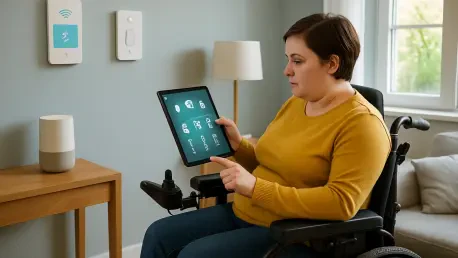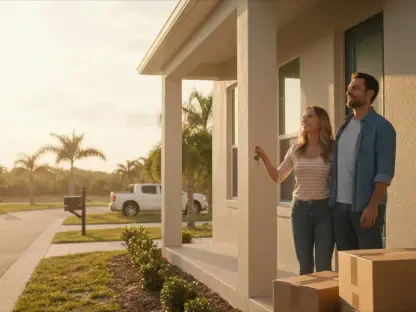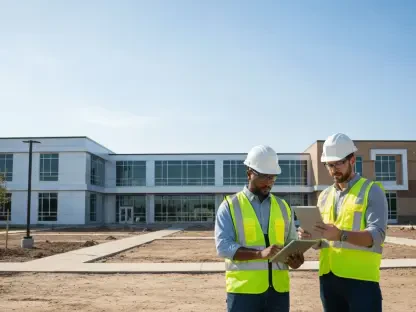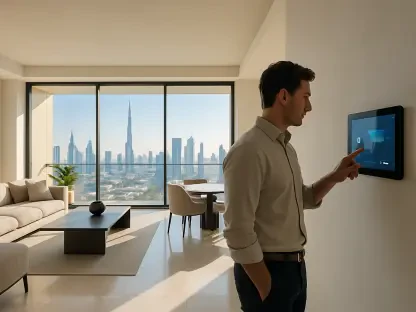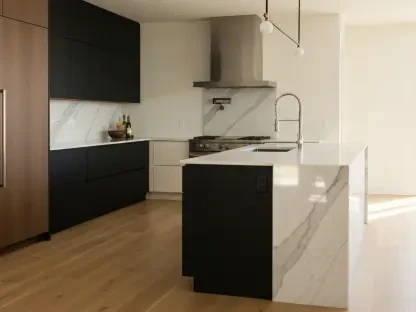Imagine a world where the simplest tasks, such as flipping a light switch or preparing a cup of coffee, become insurmountable obstacles due to physical barriers in one’s own home, a harsh reality for countless individuals with disabilities who face a daily struggle that erodes their independence and dignity. However, groundbreaking efforts like the Mattie Homes Project, spearheaded by Bethany Children’s Health Center in Oklahoma, are challenging this reality. Their unveiling of a fully accessible smart home, custom-built for Dewayne Pollard—a 21-year-old paralyzed after a tragic car accident—marks a pivotal moment in redefining what independent living can mean. This innovative approach not only addresses personal needs but also highlights systemic gaps in housing for people with disabilities. By delving into Pollard’s transformative experience and the broader implications of such initiatives, a clearer picture emerges of how tailored living spaces can restore autonomy and reshape lives.
Redefining Autonomy Through Tailored Spaces
For many individuals with disabilities, the concept of independence is often overshadowed by environments that fail to accommodate their needs, rendering basic activities frustrating or impossible. In the case of Dewayne Pollard, the introduction of the “Dewayne Model” home by the Mattie Homes Project has fundamentally altered this narrative. Designed with meticulous attention to detail, the space incorporates features such as lowered countertops, automated sinks, and layouts optimized for wheelchair accessibility. These elements empower Pollard to engage in routine tasks—like cooking a cherished family recipe of tilapia—without relying on external help. Far from being mere conveniences, these adaptations serve as vital tools that restore a sense of control over one’s surroundings, proving that a thoughtfully designed home can be a cornerstone of personal freedom and self-reliance for those facing mobility challenges.
Beyond the physical modifications, accessible housing offers a profound shift in mindset for residents who have long grappled with dependency. Pollard’s transition into this custom-built environment symbolizes more than just a change of address; it represents a reclaiming of agency that many might take for granted. The ability to navigate a space without constant assistance fosters confidence and diminishes the psychological burden of feeling limited by one’s disability. Each accessible feature, from smart appliances to barrier-free thresholds, acts as a quiet affirmation of capability, allowing individuals to focus on their strengths rather than their constraints. This transformation underscores a critical truth: when homes are built with accessibility as a priority, they become more than shelters—they evolve into platforms for empowerment, enabling residents to redefine their potential on their own terms.
Addressing the Transition Gap for Young Adults
A pressing concern for young adults with disabilities is the stark absence of adequate support systems as they age out of pediatric care programs, often leaving them with few viable housing options. Bethany Children’s Health Center, which provides comprehensive services for individuals from birth to age 21, has identified this critical void in care continuity. Many of these young adults find themselves placed in environments like adult nursing homes, which are ill-suited to their needs and aspirations. The Mattie Homes Project, named in honor of the center’s founder, emerges as a beacon of hope by offering transitional housing that is both affordable and specifically tailored to individual requirements. This initiative ensures that the path to adulthood is not marked by isolation or compromise but by opportunities to build skills and independence in a supportive setting.
The significance of such transitional housing extends beyond immediate accommodation; it serves as a vital stepping stone toward long-term self-sufficiency. By providing a stable environment for at least a few years, projects like these allow residents to develop essential life skills, secure employment, or pursue further education without the looming threat of unsuitable living conditions. The focus on affordability addresses another layer of the challenge, as fully accessible homes often come with prohibitive costs that exclude many who need them most. Through this model, the initiative challenges the notion that accessible living must be a luxury, instead positioning it as a fundamental right. As a result, young adults with disabilities are given the chance to transition into adulthood with dignity, supported by spaces that align with their unique needs rather than working against them.
Harnessing Innovation and Collaboration
The creation of accessible housing often hinges on innovative design and collaborative efforts, as exemplified by the partnership between Bethany Children’s Health Center and Iron Bison Homes in developing the first Mattie Home. This alliance prioritized direct input from Dewayne Pollard himself, ensuring that the design addressed specific obstacles he faced in traditional settings, such as unreachable light switches or high door thresholds. The result is a home that not only meets immediate practical needs but also sets a precedent—the “Dewayne Model”—for future constructions. This personalized approach demonstrates how involving residents in the design process can lead to solutions that are both effective and deeply meaningful, transforming a house into a true haven of independence.
Moreover, the integration of smart technology elevates the functionality and safety of these living spaces, showcasing how modern advancements can play a pivotal role in accessibility. Features like app-controlled stoves and automated fixtures allow for greater ease and security, reducing the risks associated with daily tasks for individuals with limited mobility. This technological dimension, combined with collaborative design, highlights a broader potential to revolutionize housing for people with disabilities. The partnership model also sends a powerful message about the value of shared commitment, as stakeholders from different sectors unite to tackle systemic challenges. By blending innovation with empathy, such initiatives pave the way for scalable solutions that can adapt to diverse needs, ensuring that accessibility becomes a standard rather than an exception in home design.
Emotional Renewal Through Accessible Environments
The impact of accessible housing transcends physical accommodations, deeply influencing emotional and mental well-being for individuals who have endured years of limitation. Dewayne Pollard’s journey offers a poignant example of this effect; prior to moving into his custom home, much of his time was spent confined to bed, wrestling with feelings of depression and isolation. The unveiling of his new space, celebrated with a ribbon-cutting ceremony, marked a turning point filled with awe and gratitude. Being able to navigate his environment independently and perform tasks others might consider mundane rekindled a sense of purpose. This emotional renewal illustrates how the right living conditions can act as a catalyst for healing, lifting the weight of dependency and restoring a vital connection to everyday life.
Equally important is the restoration of joy and normalcy that accessible housing can facilitate, often in ways that are subtle yet profound. For Pollard, the simple act of preparing a meal without assistance became a powerful symbol of reclaimed autonomy, echoing memories of a life before his accident. Such moments highlight the psychological benefits of environments that support rather than hinder, allowing individuals to focus on personal growth and relationships rather than constant barriers. This shift in perspective can break the cycle of frustration and helplessness that inaccessible spaces often perpetuate. By fostering an atmosphere where small victories are possible, accessible homes become spaces of emotional resilience, proving that dignity and happiness are just as critical as physical access in transforming lives.
Inspiring a Movement for Wider Change
Projects like the Mattie Homes initiative carry implications that reach far beyond individual beneficiaries, sparking inspiration for systemic progress in disability support. Dewayne Pollard’s hope is that his story will motivate others with disabilities to envision a future where independence is within reach, showing that barriers can be overcome with the right resources. Meanwhile, leaders at Bethany Children’s Health Center are already looking ahead, with plans to construct additional accessible homes in the near future. As a pilot project, this first home serves as a learning opportunity, with feedback from Pollard shaping refinements for subsequent designs. This forward-thinking approach signals a commitment to scalability, aiming to address the housing needs of a larger population over time.
The broader vision of such initiatives lies in their potential to redefine societal expectations and norms around disability and housing. By demonstrating the transformative power of accessible design, these projects challenge policymakers, builders, and communities to prioritize inclusivity in urban planning and development. The ripple effect could lead to increased funding, awareness, and advocacy for similar programs, ensuring that the benefits experienced by individuals like Pollard become accessible to many more. As lessons from this initial effort are applied to future endeavors, there is a clear pathway toward a landscape where housing is no longer a barrier but a bridge to autonomy. This momentum underscores the importance of sustained effort and collaboration in creating a world where everyone has a place to thrive.
Overcoming Systemic Obstacles
Accessible housing initiatives confront deep-rooted systemic obstacles that have long marginalized individuals with disabilities, particularly during vulnerable transition periods. There is a growing consensus among stakeholders that conventional housing solutions consistently fall short, often leaving young adults with few options beyond environments that stifle their potential. Programs like the Mattie Homes Project directly challenge these inadequacies by offering personalized, cost-effective alternatives that prioritize resident needs over outdated standards. This shift represents a bold stand against the status quo, advocating for living spaces that enable community integration and personal growth as essential components of a just society.
Furthermore, the success of such projects highlights the necessity of rethinking how resources are allocated to support disability care on a larger scale. By focusing on transitional housing as a temporary yet impactful solution, these efforts address immediate needs while laying the groundwork for long-term policy changes. The emphasis on affordability ensures that financial constraints do not exclude those who stand to benefit most, pushing for a model where accessibility is embedded in the fabric of housing design. As more organizations and communities take note of these pioneering efforts, the conversation around disability rights gains momentum, urging a collective move toward environments that uphold autonomy as a fundamental principle rather than an afterthought.
